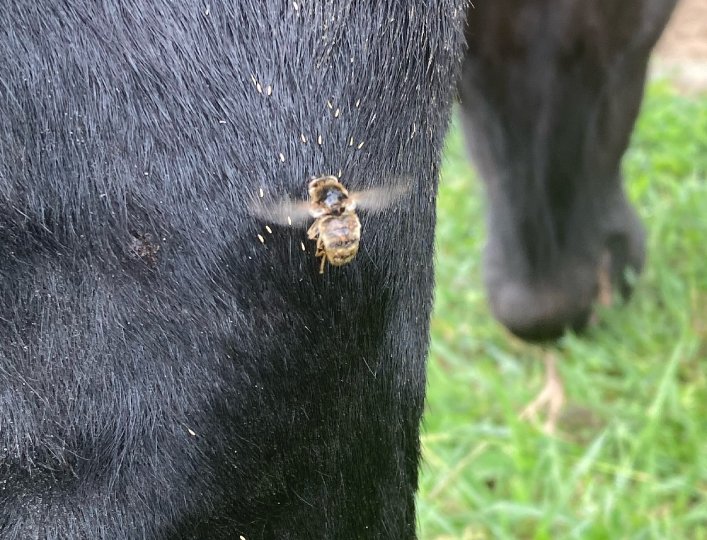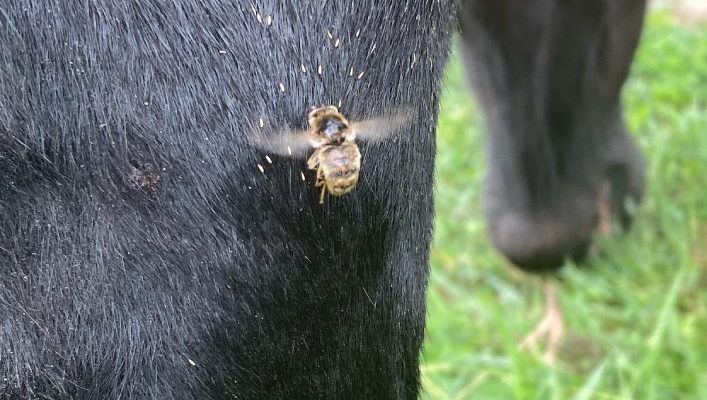
Now, you might be wondering why we even care about how botflies lay eggs. Well, their life cycle impacts animals (and sometimes even humans) in surprising ways. Understanding this process not only highlights the intricate interactions in ecosystems but also helps us appreciate the important roles these insects play—however odd they may seem. So, let’s get into the nitty-gritty of botflies and their egg-laying antics.
What Are Botflies?
Before we dig deeper, let’s clarify what botflies actually are. Botflies are a type of parasitic fly belonging to the family Oestridae. They’re mostly found in warm areas across North and South America. Their larvae develop within the bodies of mammals, deriving nourishment from their hosts. Yes, that sounds gross, but it’s part of their survival strategy!
Think of botflies as the ultimate hitchhikers. They need other animals to carry their young, and they execute this maneuver in a rather clever way. The adult female botfly lays her eggs close to the burrows of potential host animals, like rabbits, rodents, or even livestock. This makes it much easier for the larvae to find a suitable host when they hatch. It’s a bit like setting a trap, where the botfly knows that certain animals frequent these locations.
The Unique Egg-Laying Process
So, how do botflies actually lay their eggs in such a strategic fashion? The process is quite fascinating. The female botfly uses her ovipositor, a specialized organ, to lay eggs. But here’s the twist: Instead of just laying eggs directly on the host, she puts them on nearby objects, like blades of grass or sand. This heightens the chance of them being picked up by an unsuspecting animal.
Once the eggs are deposited, they’re not just sitting around waiting to hatch. The warmth from the animal’s body prompts them to hatch quickly. Imagine being on a fast track to your next meal! When conditions are just right, the botfly larvae hatch from the eggs and either enter the host’s body through the skin or through natural orifices, like the mouth or nose.
Why Burrows?
The choice of laying eggs near animal burrows is strategic for a number of reasons. First, these burrows are typically wildlife highways, often frequented by animals that make great hosts for botfly larvae. It’s a bit like laying a buffet right where the guests are likely to arrive!
Additionally, burrows provide shelter from predators. If a botfly lays eggs close to an animal’s home, they are less likely to be eaten by other insects or birds before hatching. It’s a clever survival strategy. The botfly’s eggs are also designed to withstand various environmental conditions, ensuring greater success rates.
Life Cycle of Botflies
Understanding the life cycle of botflies can highlight just how unique their reproduction is. It goes something like this:
1. Egg Stage: The female lays her eggs near animal burrows. These eggs can hatch in just a few days, especially with enough warmth.
2. Larval Stage: After hatching, the larvae need to find a host quickly. They latch onto the animal and burrow into its skin, causing discomfort.
3. Pupal Stage: Inside the host, the larvae grow and develop over several weeks. Eventually, they emerge from their host to pupate in the soil.
4. Adult Stage: After a few weeks, adult flies emerge from the pupae, ready to begin the cycle again.
This cycle can take several weeks to months, depending on environmental conditions and the host’s health. It’s a meticulous process, but it’s also a little grotesque—one that makes botflies a subject of both intrigue and caution.
Impact on Host Animals
The relationship between botflies and their host animals can be quite stressful. While it’s normal for many animals to face parasites, the presence of botfly larvae can lead to significant discomfort or illness.
In some cases, animals may develop secondary infections from the botfly’s entry point or experience severe irritation. In livestock, this can lead to decreased productivity or loss of weight, affecting farmers’ livelihoods. Wildlife can also suffer severe health impacts, potentially affecting populations in certain areas.
Here’s the thing: while some might argue that parasites like botflies are simply a part of nature, it can raise ethical questions. Is it right for one creature to cause suffering to another? That’s something many people grapple with when considering the interconnectedness of ecosystems.
Human Interactions with Botflies
While botflies typically prefer animals, humans can sometimes find themselves in the mix too. For instance, certain species of botflies, like the human botfly (*Dermatobia hominis*), have been known to lay eggs on humans. This can happen when the eggs are transferred through mosquito bites. Ouch!
Humans can also inadvertently assist the botfly’s lifecycle through their interactions with nature. Whether you’re camping or hiking through insect-rich areas, be mindful. If you notice unusual discomfort or a wound that seems off, don’t hesitate to consult a doctor.
In essence, botflies remind us that nature is full of surprises—some pleasant, some not so much.
Botflies might be small, but their impact on ecosystems is immense. By laying eggs near animal burrows, they’ve worked out a unique survival strategy that’s both clever and complex. Understanding how these insects interact with their environment gives us a glimpse into the wild, intricate web of life that exists all around us.
While botflies might not be the most lovable of creatures, they play a role in the natural order, reminding us how every species has its place. Next time you think of nature’s oddities, remember the tiny helicopter moms of the insect world and their fascinating egg-laying process!

